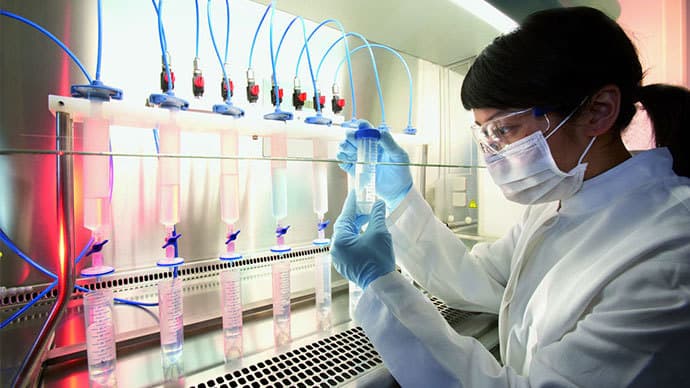For the first time ever, researchers were able to isolate patients’ own cells to create cells to those in the bone marrow. They would then use the new cells to identify potential treatment for blood disorders.
This study (and its findings) was conducted by researchers at Harvard Medical School and Boston Children’s Hospital and published on February 8 in Science Translational Medicine.
The study focused on two patients with Diamond-Blackfan Anemia (DBA) from whom the researchers derived blood progenitor cells. Diamond-Blackfan Anemia (DBA) is an abnormality of the bone marrow. In DBA, the bone marrow fails to produce enough red blood cells while the platelets and white blood cells remain in normal levels. This usually detected in the first year of birth.
The team derived induced pluripotent stem cells (iPSCs) from the patients’ own skin. The iPSCs were then specialized into blood-forming cells. The cells were used to screen a library of about 1,440 chemicals compounds that could help the DBA blood progenitor cells develop into red blood cells. They found one compound, SMER28, to be very effective. It was able to get DBA model mice and zebrafish to produce more red blood cells.
According to Sergei Doulatov, while it had been hard to instruct iPSCs to make blood cells in the past, for the very first time, the iPS cells were used to identify a drug to treat a blood disorder.
Currently, DBA is treated using steroids which most patients either do not respond to or stop responding to eventually. The patients are subsequently subjected to lifelong blood transfusions and a miserable life. The good news is that the scientists are hopeful about SMER28. They believe that it has potential in the treatment of rare blood disorders such as DBA.
The blood progenitor cells derived from the patient failed to produce erythroid cells. The same was seen in both the fish and the mice studied. However, the chemical screening, the wells loaded with SMER28 yielded erythroid cells.
SMER28 was also tested in mice transplanted with cells from DBA patients. Higher doses of SMER28 were shown to generate larger quantities of red blood cells with no ill effects.
Studies on toxicity levels are yet to be conducted.
Research Outcomes
In the past, researchers have had major setbacks in isolating blood stem cells from patients. Even when they have succeeded a number of cells were not enough to regenerate and be useful for research.
The team of researchers from HMS and Boston Children’s were able to transform iPS cells into blood progenitor cells instead of blood stem cells. The blood progenitor cells are multipotent; they make red blood cells just as well. They also can be readily multiplied in a lab because drug screens require a lot of cells.
For some neurodegenerative diseases, SMER28 has been seen to activate an autophagy that recycles damaged cells. In the future, the researchers led by Doulatov will continue to explore how SMER28 boosts production of red blood cells and determine whether the chemical compound will be useful in the treatment of DBA and other blood disorders.




 English
English